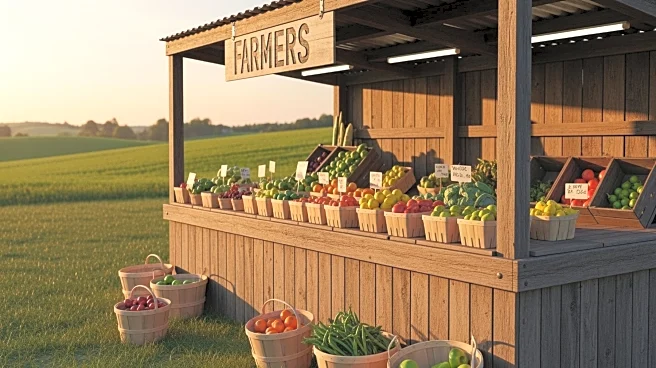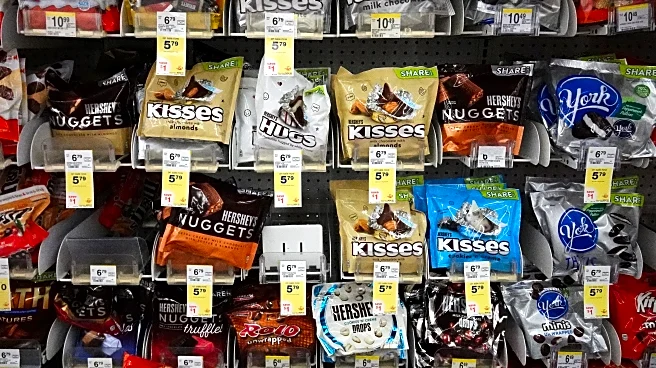What's Happening?
Artisan chocolate producers and major candy manufacturers are facing increased cocoa prices, leading to changes in product offerings and pricing. Escazú Chocolates, a specialty chocolate shop in Raleigh, North Carolina, sources its cocoa beans from Latin
America and has traditionally paid farmers above the commodity price. However, the recent spike in cocoa prices has further increased their costs. As a result, some chocolate makers are reducing cocoa content in their products and increasing sugar, such as offering bars with 65% cocoa instead of 75%. This trend is part of a broader industry shift, with companies like Hershey adjusting their 'price pack architecture' to reduce the amount of product in a package without raising prices. The overall cost of candy has risen by 10.8% this Halloween season, significantly outpacing general inflation rates.
Why It's Important?
The rising cost of cocoa and subsequent adjustments by chocolate producers have significant implications for both consumers and the confectionery industry. Consumers are likely to experience higher prices and less chocolate content in their favorite treats, impacting purchasing decisions and potentially altering consumer preferences. For the industry, these changes could affect profit margins and market dynamics, as companies seek to balance cost increases with consumer demand. The shift towards less chocolate and more sugar in products may also influence health trends and consumer perceptions of chocolate quality. Additionally, the impact of tariffs and other economic factors further complicates the financial landscape for chocolate producers.
What's Next?
As cocoa prices remain high, chocolate manufacturers may continue to explore cost-cutting measures and product reformulations. This could lead to more shrinkflation and a greater emphasis on non-chocolate products, such as gummies, which have seen increased popularity. Companies might also introduce new flavors and product lines that rely less on cocoa, appealing to changing consumer tastes. The industry will need to navigate these challenges while maintaining consumer trust and brand loyalty. Stakeholders, including farmers, manufacturers, and retailers, will likely engage in discussions to address these economic pressures and find sustainable solutions.
Beyond the Headlines
The current situation highlights broader issues within the global cocoa supply chain, including the impact of climate change on cocoa production in key regions like Ghana and the Ivory Coast. These challenges underscore the need for sustainable agricultural practices and fair trade initiatives to support farmers and ensure a stable supply of cocoa. The industry's response to rising costs may also prompt discussions about ethical sourcing and the environmental impact of chocolate production. As consumers become more aware of these issues, companies may face increased pressure to demonstrate corporate responsibility and transparency in their supply chains.














